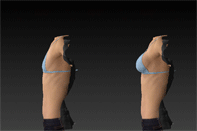If there’s one thing that makes Dallas, Texas truly special, it’s the incredible food scene that’s as big and bold as the Lone Star State. Having an office near the downtown area of Dallas gives us the opportunity to enjoy some of the amazing restaurants in the area.
Whether you’re in town for pleasure or coming to our offices for a procedure, there are plenty of great food options within the area that we highly recommend. From steaks to Tex-Mex, you’ll find all sorts of delicious food from different cultures.
While there are too many options to mention in one post, here are 5 of our favorite restaurants in the area that we are sure you’ll love just as much as us.
A Taste of Dallas: From Tex-Mex to Gourmet Eats
When it comes to food, Dallas doesn’t mess around. We’re known for our Tex-Mex treasures, juicy steaks, finger-licking barbecue, and so much more. The city’s food culture is a delightful blend of Southern comfort and international flair. From food trucks to upscale bistros, there’s something for everyone here.
5 Must-Try Local Restaurants
-
Dona Maria
If you’re looking to satisfy your Tex-Mex cravings, look no further than Dona Maria Mexican Restaurant. Located a bit north of downtown Dallas, this Mexican restaurant is where you want to go if you’re looking for great tasting Mexican food. This counter service restaurant serves up delectable tacos, burritos, gorditas and more.
There are plenty of options for Tex-Mex in the Dallas area, but if you have a chance, check out Dona Maria.
-
Bistro 31
Bistro 31 offers an exquisite dining experience that combines upscale elegance with a warm and welcoming ambiance. The menu boasts an array of dishes that cater to diverse palates. Whether you’re a fan of seafood, poultry, or decadent pastas, there’s something for everyone. Some highlights include truffle risotto, pan-seared sea bass, and lobster ravioli.
Whether you’re celebrating a special occasion or simply seeking a great dining experience, Bistro 31 is a must-visit destination that will leave you wanting more.
-
Truck Yard
While this one isn’t a specific restaurant, Truck Yard is a great place to visit if you’re looking for an array of different food trucks all serving up incredible dishes that rival any restaurant in the city.
Featuring a different food truck every day, and sometimes (especially on the weekends) multiple trucks, you’ll find everything from BBQ and burgers to pizza and grilled cheese.
If you’re looking for a different meal every day, or can’t decide what you want, visit the Truck Yard and you won’t be disappointed.
-
Hudson House
Nestled in the heart of Dallas, Texas, Hudson House stands as a coastal oasis in the middle of the city’s vibrant dining scene. The restaurant’s nautical-inspired décor, complete with maritime accents and soothing hues, creates an ambiance that is both relaxed and refined. It’s the perfect setting for an intimate dinner or a casual gathering with friends.
Hudson House’s menu showcases an array of seafood creations that will leave your taste buds happy. Whether you’re a fan of classics like oysters and shrimp or looking to explore more adventurous options, there’s something for everyone.
-
Cane Rosso
The moment you step into Cane Rosso, you’re greeted by a rustic and cozy ambiance that reminds you of the spirit of an Italian trattoria. The restaurant’s exposed brick walls, dim lighting, and charming décor create an atmosphere that is both inviting and romantic, making it a perfect spot for a cozy dinner or a joyful gathering with friends.
At the heart of Cane Rosso’s menu is the art of crafting Neapolitan-style pizza. The menu is a tribute to the original techniques and traditions that make these pizzas truly exceptional. From the dough to the toppings, each element is carefully chosen to create a combination of flavors that will make any pizza lover happy.
It Doesn’t Get Better Than Food in Texas
Dallas’ food scene is full of diverse flavors and culinary traditions. Whether you’re a Tex-Mex enthusiast, a steak connoisseur, an international food explorer, a seafood aficionado, or love a good traditional pizza, our city has an endless number of options.
So, the next time you’re in Dallas, take a culinary detour and treat yourself to the delicious offerings that our city proudly serves. From the sizzle of the grill to the incredible aromas wafting from food trucks, every bite tells a story of the vibrant food culture that makes Dallas a true food lover’s paradise.















